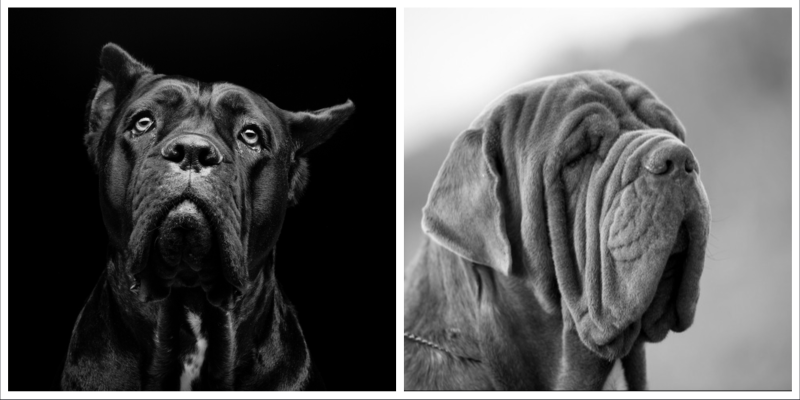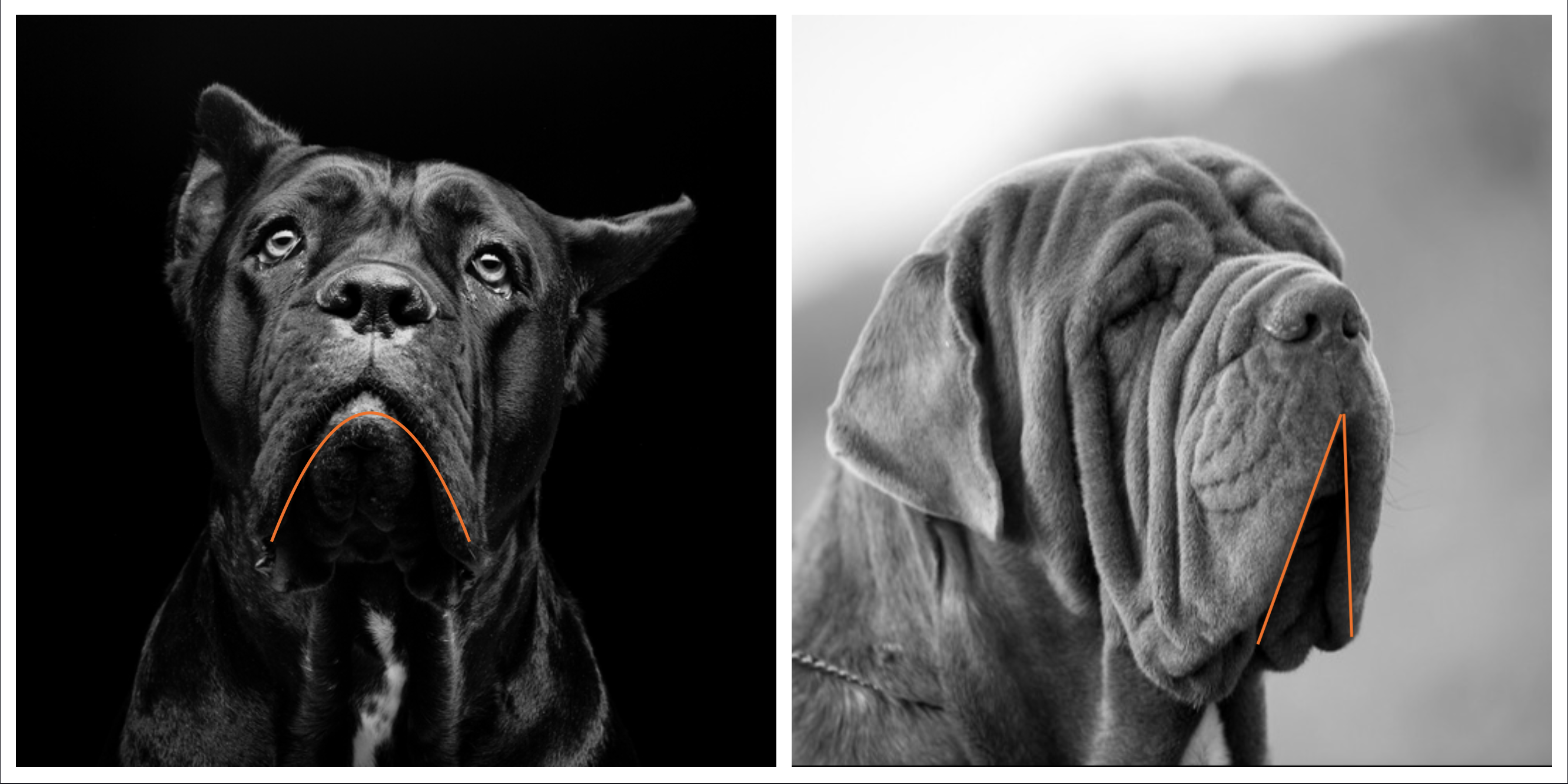
The word,”molosser,” describes a group of working breeds with a related ancestry historically used to guard and protect properties and livestock.
Here would be a good place to mention that “molossus” and “molosser” are not the same thing, and thus are not interchangable. The term “molosser” is used to describe a category of dogs typically characterized by a substantial build, while the term “Molossus” originally referred to an ancient breed now extinct. Some might argue the modern use of both words, but that’s a topic for another day. Here we want to touch upon two of the breeds under the “molosser umbrella,” the Cane Corso and the Neapolitan Mastiff.

There is another difference between the two which would fall under the category of “the devil is in the details,” something others might regard as nitpicking. We don’t because each breed’s AKC standard mentions it, and if it’s in a standard, then it matters if only to the breeders and exhibitors. Look at the faces of these two dogs more closely.
The Neapolitan Mastiff at the right has heavy, thick, and long lips, and the upper lips join beneath the nostrils to form an inverted “V”
The Cane Corso has, of course, firmer lips, but his upper lips hang more moderately and join under the nostrils to form an inverted “U.”

Nitpicky? Maybe, but if you were to switch “alphabet lips, you would lose breed type in a big way. These are the little, but also big differences, of which heritage breeders are aware.
Collage Images: Neapolitan Mastiff by Okikukai/iStock; Photo of Cane Corso by Svetlana Mandrikova/dreamstime; Top image of Neapolitan Mastiff/Depositphotos
